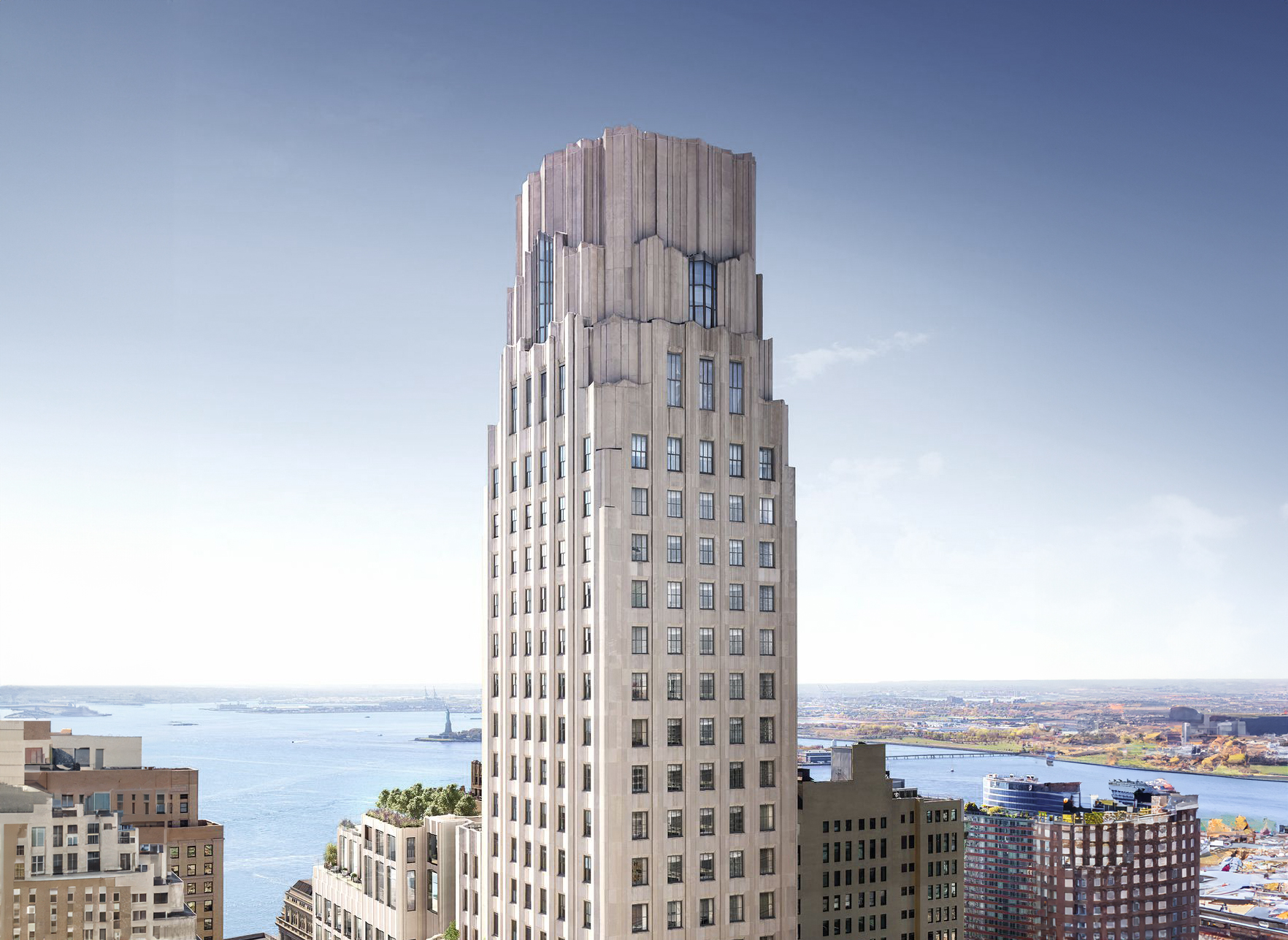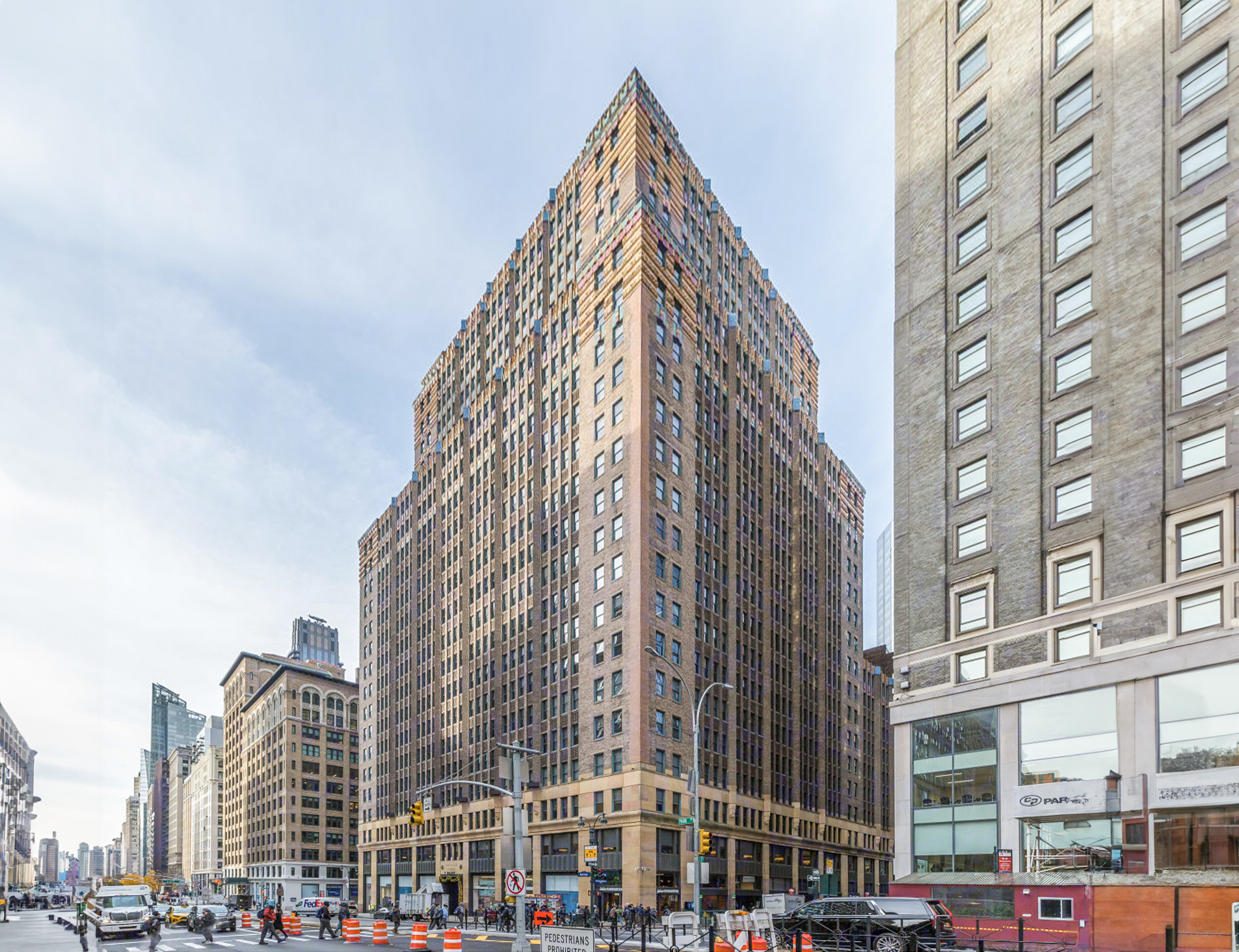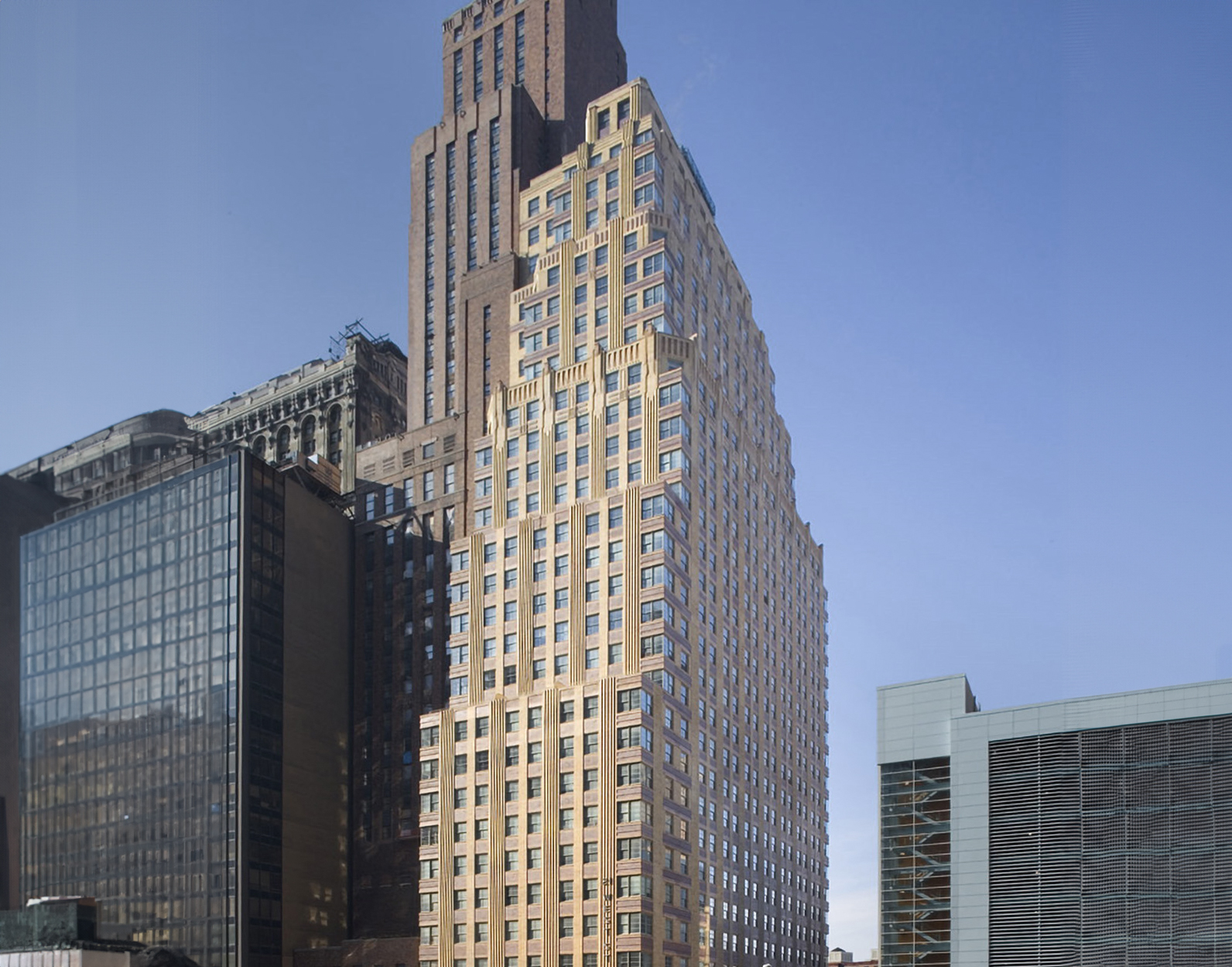The Continental Bank Building is an Art-deco skyscraper designed by Cross & Cross, and built between 1931 and 1932, for a reported $20.0 million dollars, in New York, NY.
Continental Bank Building is not the only name you might know this building by though. The building is, or has also been known as 30 Broad Street.
Its precise street address is 30 Broad Street, New York, NY. You can also find it on the map here.
At the time of its completion in 1932 the Continental Bank Building incorporated solutions that were quite advanced at the time, these included the so called compensation chamber in the basement, which was used so that tenants could carry out transactions among themselves through pneumatic tubes.
The building underwent a major restoration between 2016 and 2017. The architect commissioned to undertake this restoration was MADGI, Jun Aizaki Architecture & Design.






